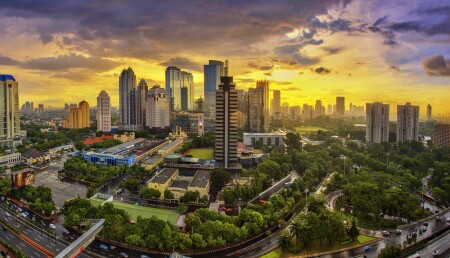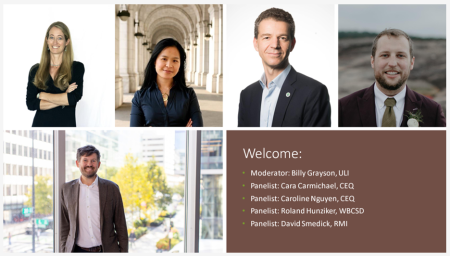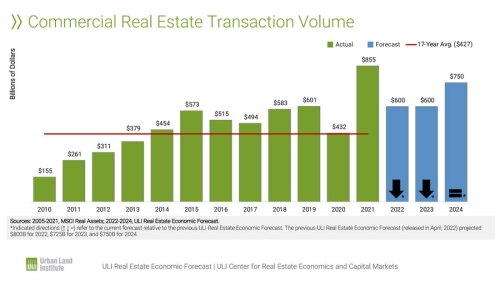
At COP 27, Indonesia was one of several rapidly growing countries that established a goal to reach net zero emissions in the power sector by 2050, bringing forward a net zero power sector emissions target by ten years. Indonesia is also planning to move its capital city away from Jakarta due to climate change’s growing impact, including heavy rains and flooding. (Shutterstock)
A ULI webinar in December focused on the role of commercial real estate in fulfilling the vision of the United Nations Conference of the Parties 27 (COP 27) in Sharm el-Sheikh, Egypt, with leading companies pledging to net-zero operations as soon as 2025.
Access this webinar on Knowledge Finder.
Billy Grayson, executive vice president, ULI Centers & Initiatives, who attended the conference shared a few takeaways:
“One of the topics that set the tone was whether we can still hit the 34.7°F (1.5°C) target. None of the participants wavered…[Rather] There was a new discussion on credible pathways [to meet this goal].”
Aside from the 34.7°F target to limit global warming, Grayson said “a big theme in the discussion was around climate reparations for the global south. … And there was a recognition that the industrialized world played a big part in climate change.” The outcome of this decision was a pledge to create a “loss and damage” fund for countries in the global south. Grayson also highlighted two more takeaways: investors committing to decarbonize their entire portfolios by 2025 and discussions of nature-based solutions for climate adaptation and mitigation. “This includes mangroves, peat moss, tundra, and coral reefs,” Grayson adds.
Roland Hunziker, director of the World Business Council for Sustainable Development (WBCSD). WBCSD is a membership organization with a coalition of two hundred members dedicated to a net zero future. Hunziker focused on a chart that detailed global CO2 emissions of buildings, construction operations, and processes in 2021. The total emissions of the building sector is thirty-seven percent, said Hunziker. This includes direct energy consumption, electricity consumed, and a small chunk of that being infrastructure.
Hunziker detailed that emission intensity decreased by seven percent. But the energy intensity did not drop as the amount of global building space grew. In comparing the various aspects of the chart, Hunziker said: “What we have lost in emission intensity, we have not gained in efficiency.”
Caroline Nguyen, director at the Council on Environmental Quality (CEQ), outlined the U.S.’s goals for COP 27. First, the U.S. sought a collective political statement that reaffirmed the promises made in Glasgow. Second, the U.S. wanted to focus on making concrete progress in key countries. “For example,” Nguyen adds, “Australia committed to a 34.3°F (1.3°C) target.” Nguyen also highlighted that Indonesia moved its peak power timeframe up by seven years to 2030.
Third, the U.S. pursued multilateral initiatives to reduce carbon emissions today and in the longer term. “The U.S. along seaside Norway launched the net zero government initiative.” Said Nguyen. The challenge comes with three rules: governments must commit to net zero by 2050; they must provide a strategy or roadmap; and they must commit to publishing their strategy.
Lastly, the U.S. wanted to showcase its own major milestones, contributions, and achievement. “President Biden proposed a new role on federal climate change by asking major suppliers to disclose their emissions. [This is the] first time the national government has used its power of procurement to meet this requirement,” said Nguyen.
In addition, the federal government has also applied mandates to its buildings. Cara Carmichael, director for federal buildings at CEQ, said, “Buildings are the largest greenhouse gas emitters in the world and the same holds true for our federal buildings. The Federal Building Performance Standards (BPSP) cuts energy use by thirty percent and electrifies equipment by 2030.” The BPS targets scope one emissions and existing buildings.
Lastly David Smedick, federal and international policy manager at Rocky Mountain Institute, discussed the excitement and more room for discussion when it comes to building resources. “Shipping, the industrial sector: steel, concrete, and cement … What are we doing on the demand side to send the signal that we need cleaner resources.” Smedick described the footprint of new construction in the global south as “getting a new New York and a new Paris each year.”



